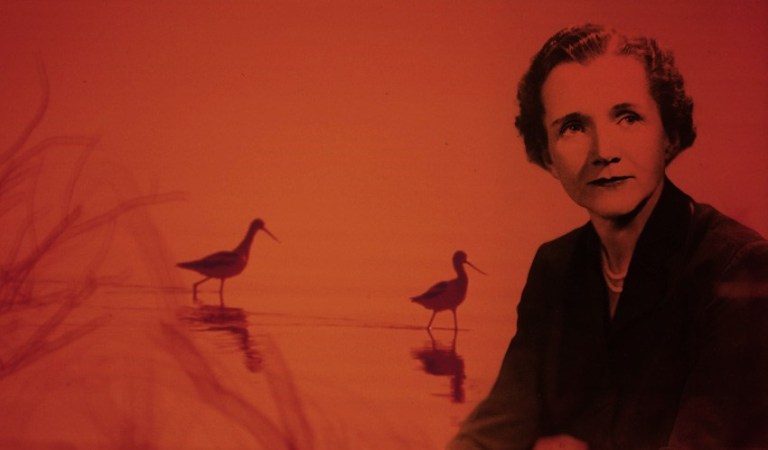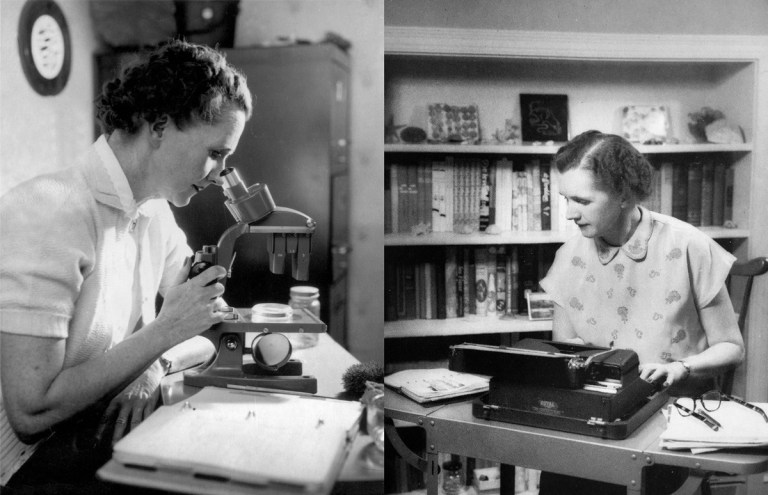The Writing of “Silent Spring”: Rachel Carson and the Culture-Shifting Courage to Speak Inconvenient Truth to Power
INSPIRATIONAL, 4 Nov 2019
Maria Popova | Brain Pickings – TRANSCEND Media Service
“It is, in the deepest sense, a privilege as well as a duty to have the opportunity to speak out — to many thousands of people — on something so important.”
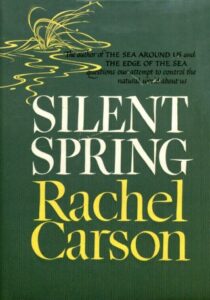 “Life and Reality are not things you can have for yourself unless you accord them to all others,” philosopher Alan Watts wrote in the 1950s as he contemplated the interconnected nature of the universe. What we may now see as an elemental truth of existence was then a notion both foreign and frightening to the Western mind. But it was a scientist, not a philosopher, who levered this monumental shift in consciousness: Rachel Carson (May 27, 1907–April 14, 1964), a Copernicus of biology who ejected the human animal from its hubristic place at the center of Earth’s ecological cosmos and recast it as one of myriad organisms, all worthy of wonder, all imbued with life and reality. Her lyrical writing rendered her not a mere translator of the natural world, but an alchemist transmuting the steel of science into the gold of wonder. The message of her iconic Silent Spring (public library) rippled across public policy and the population imagination — it led to the creation of the Environmental Protection Agency, inspired generations of activists, and led Joni Mitchell to write lyrics as beloved as “Hey farmer farmer — / Put away the DDT / Give me spots on my apples, / but leave me the birds and the bees. / Please!”
“Life and Reality are not things you can have for yourself unless you accord them to all others,” philosopher Alan Watts wrote in the 1950s as he contemplated the interconnected nature of the universe. What we may now see as an elemental truth of existence was then a notion both foreign and frightening to the Western mind. But it was a scientist, not a philosopher, who levered this monumental shift in consciousness: Rachel Carson (May 27, 1907–April 14, 1964), a Copernicus of biology who ejected the human animal from its hubristic place at the center of Earth’s ecological cosmos and recast it as one of myriad organisms, all worthy of wonder, all imbued with life and reality. Her lyrical writing rendered her not a mere translator of the natural world, but an alchemist transmuting the steel of science into the gold of wonder. The message of her iconic Silent Spring (public library) rippled across public policy and the population imagination — it led to the creation of the Environmental Protection Agency, inspired generations of activists, and led Joni Mitchell to write lyrics as beloved as “Hey farmer farmer — / Put away the DDT / Give me spots on my apples, / but leave me the birds and the bees. / Please!”
A woman scientist without a Ph.D. or an academic affiliation became the most powerful voice of resistance against ruinous public policy mitigated by the self-interest of government and industry, against the hauteur and short-sightedness threatening to destroy this precious pale blue dot which we, along with countless other animals, call home.
Carson had grown up in a picturesque but impoverished village in Pennsylvania. It was there, amid a tumultuous family environment, that she fell in love with nature and grew particularly enchanted with birds. A voracious reader and gifted writer from a young age, she became a published author at the age of ten, when a story of hers appeared in a children’s literary magazine. She entered the Pennsylvania College for Women with the intention of becoming a writer, but a zestful zoology professor — herself a rare specimen as a female scientist in that era — rendered young Carson besotted with biology. A scholarship allowed her to pursue a Master’s degree in zoology and genetics at Johns Hopkins University, but when her already impecunious family fell on hard times during the Great Depression, she was forced to leave the university in search of a full-time paying job before completing her doctorate.
After working as a lab assistant for a while, she began writing for the Baltimore Sun and was eventually hired as a junior aquatic biologist for what would later become the U.S. Fish and Wildlife Service. Her uncommon gift for writing was soon recognized and Carson was tasked with editing other scientists’ field reports, then promoted to editor in chief for the entire agency. Out of this necessity to reconcile science and writing was born her self-invention as a scientist who refused to give up on writing and a writer who refused to give up on science — the same refusal that marks today’s greatest poets of science.
In 1935, 28-year-old Carson was asked to write a brochure for the Fisheries Bureau. When she turned in something infinitely more poetic than her supervisor had envisioned, he asked her to rewrite the brochure but encouraged her to submit the piece as an essay for The Atlantic Monthly. She did. It was accepted and published as “Undersea” in 1937– a first of its kind, immensely lyrical journey into the science of the ocean floor inviting an understanding of Earth from a nonhuman perspective. Readers and publishers were instantly smitten. Carson, by then the sole provider for her mother and her two orphaned nieces after her older sister’s death, expanded her Atlantic article into her first book, Under the Sea-Wind — the culmination of a decade of her oceanographic research, which rendered her an overnight literary success.
Against towering cultural odds, these books about the sea established her — once a destitute girl from landlocked Pennsylvania — as the most celebrated science writer of her time.
But the more Carson studied and wrote about nature, the more cautious she became of humanity’s rampant quest to dominate it. Witnessing the devastation of the atomic bomb awakened her to the unintended consequences of science unmoored from morality, of a hysterical enthusiasm for technology that deafened humanity to the inner voice of ethics. In her 1952 acceptance speech for the John Burroughs Medal, she concretized her credo:
It seems reasonable to believe — and I do believe — that the more clearly we can focus our attention on the wonders and realities of the universe about us the less taste we shall have for the destruction of our race. Wonder and humility are wholesome emotions, and they do not exist side by side with a lust for destruction.
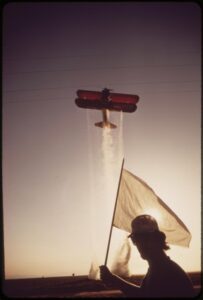
Photograph by Charles O’Rear from the Environmental Protection Agency’s Documerica project. (U.S. National Archives)
One of the consequences of wartime science and technology was the widespread use of DDT, initially intended for protecting soldiers from malaria-bearing mosquitoes. After the end of the war, the toxic chemical was lauded as a miracle substance. People were sprayed down with DDT to ward off disease and airplanes doused agricultural plots in order to decimate pest and maximize crop yield. It was neither uncommon nor disquieting to see a class of schoolchildren eating their lunch while an airplane aiming at a nearby field sprinkled them with DDT. A sort of blind faith enveloped the use of these pesticides, with an indifferent government and an incurious public raising no questions about their unintended consequences.
In January of 1958, Carson received a letter from an old writer friend named Olga Owens Huckins, alerting her that the aerial spraying of DDT had devastated a local wildlife sanctuary. Huckins described the ghastly deaths of birds, claws clutched to their breasts and bills agape in agony. This local tragedy was the final straw in Carson’s decade-long collection of what she called her “poison-spray material” — a dossier of evidence for the harmful, often deadly effects of toxic chemicals on wildlife and human life. That May, she signed a contract with Houghton Mifflin for what would become Silent Spring in 1962 — the firestarter of a book that ignited the conservation movement and awakened the modern environmental consciousness.
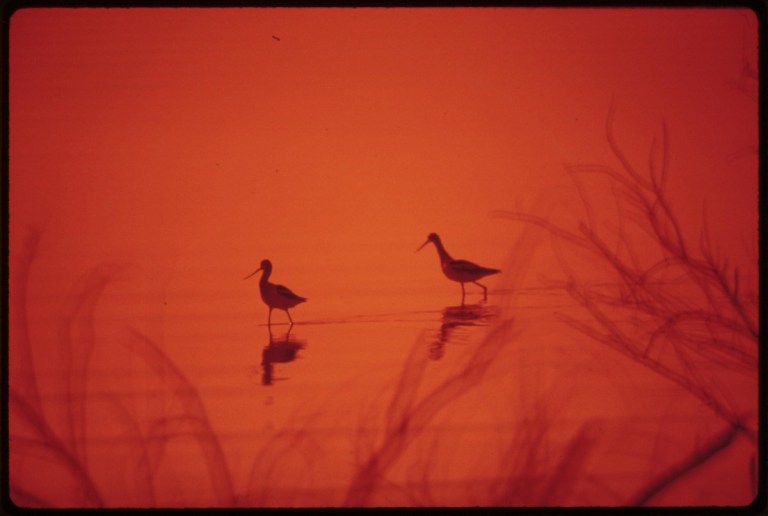
Photograph by Charles O’Rear from the Environmental Protection Agency’s Documerica project.
(U.S. National Archives)
But the book also spurred violent pushback from those most culpable in the destruction of nature — a heedless government that had turned a willfully blind eye to its regulatory responsibilities and an avaricious agricultural and chemical industry determined to maximize profits at all costs. Those inconvenienced by the truths Carson exposed immediately attacked her for her indictment against elected officials’ and corporations’ deliberate deafness to fact. They used every means at their disposal — a propaganda campaign designed to discredit her, litigious bullying of her publisher, and the most frequent accusation of all: that of being a woman. Former Secretary of Agriculture Ezra Taft Benson, who would later become Prophet of the Mormon Church, asked: “Why a spinster with no children was so concerned about genetics?” He didn’t hesitate to offer his own theory: because she was a Communist. (The lazy hand-grenade of “spinster” was often hurled at Carson in an attempt to erode her credibility, as if there were any correlation between a scientist’s home life and her expertise — never mind that, as it happened, Carson did have one of the most richly rewarding relationships a human being could hope for, albeit not the kind that conformed to the era’s narrow accepted modalities.)
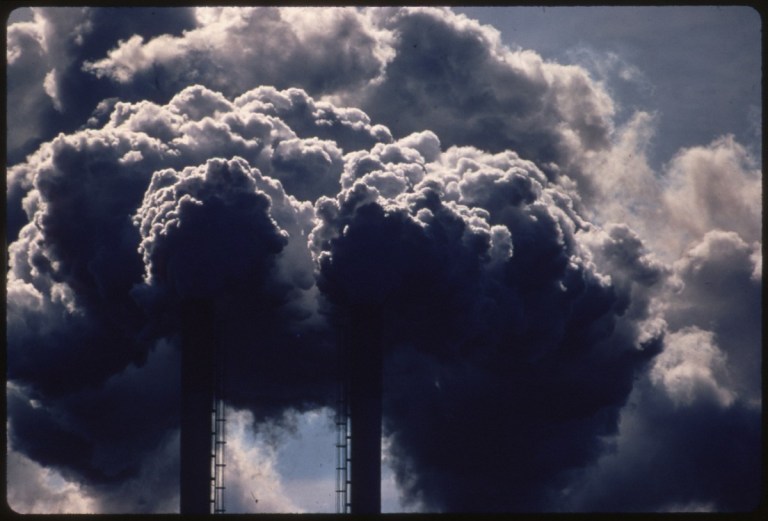
Photograph by Marc St. Gil from the Environmental Protection Agency’s Documerica project. (U.S. National Archives)
Carson withstood the criticism with composure and confidence, shielded by the integrity of her facts. But another battle raged invisible to the public eye — she was dying.
She had been diagnosed with cancer in 1960, which had metastasized due to her doctor’s negligence. In 1963, when Silent Spring stirred President Kennedy’s attention and he summoned a Congressional hearing to investigate and regulate the use of pesticides, Carson didn’t hesitate to testify even as her body was giving out from the debilitating pain of the disease and the wearying radiation treatments. With her testimony as a pillar, JFK and his Science Advisory Committee invalidated her critics’ arguments, heeded Carson’s cautionary call to reason, and created the first federal policies designed to protect the planet.
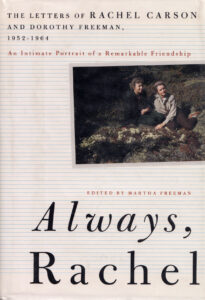 Carson endured the attacks — those of her cancer and those of her critics — with unwavering heroism. She saw the former with a biologist’s calm acceptance of the cycle of life and had anticipated the latter all along. She was a spirited idealist, but she wasn’t a naïve one — from the outset, she was acutely aware that her book was a clarion call for nothing less than a revolution and that it was her moral duty to be the revolutionary she felt called to be. Just a month after signing the book contract, she articulates this awareness in a letter found in Always, Rachel: The Letters of Rachel Carson and Dorothy Freeman, 1952–1964 (public library) — the record of her beautiful and unclassifiable relationship with her dearest friend and beloved.
Carson endured the attacks — those of her cancer and those of her critics — with unwavering heroism. She saw the former with a biologist’s calm acceptance of the cycle of life and had anticipated the latter all along. She was a spirited idealist, but she wasn’t a naïve one — from the outset, she was acutely aware that her book was a clarion call for nothing less than a revolution and that it was her moral duty to be the revolutionary she felt called to be. Just a month after signing the book contract, she articulates this awareness in a letter found in Always, Rachel: The Letters of Rachel Carson and Dorothy Freeman, 1952–1964 (public library) — the record of her beautiful and unclassifiable relationship with her dearest friend and beloved.
Carson writes to Freeman:
I know you dread the unpleasantness that will inevitably be associated with [the book’s] publication. That I can understand, darling. But it is something I have taken into account; it will not surprise me! You do know, I think, how deeply I believe in the importance of what I am doing. Knowing what I do, there would be no future peace for me if I kept silent… It is, in the deepest sense, a privilege as well as a duty to have the opportunity to speak out — to many thousands of people — on something so important.
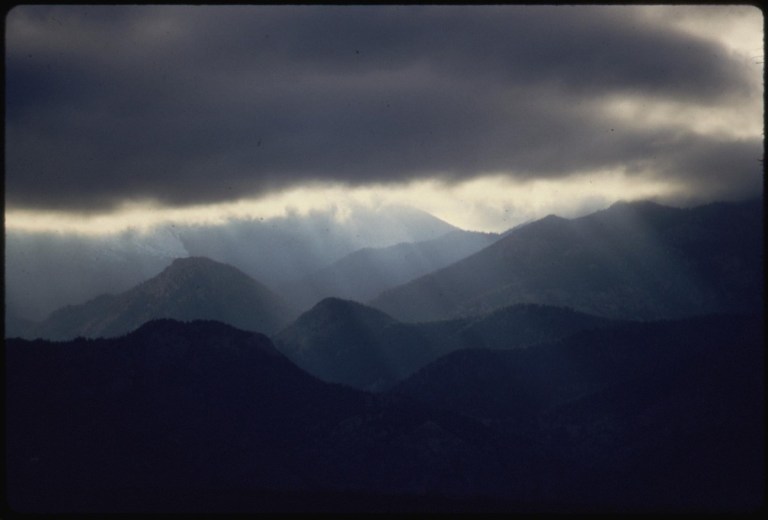
Photograph by Boyd Norton from the Environmental Protection Agency’s Documerica project. (U.S. National Archives)
In that sense, the eventual title of Silent Spring was a dual commentary on how human hubris is robbing Earth of its symphonic aliveness and on the moral inadmissibility of remaining silent about the destructive forces driving this loss. Carson upheld that sense of duty while confronting her own creaturely finitude as she underwent rounds of grueling cancer treatment. In a letter to Freeman from the autumn of 1959, she reports:
Mostly, I feel fairly good but I do realize that after several days of concentrated work on the book I’m suddenly no good at all for several more. Some people assume only physical work is tiring — I guess because they use their minds little! Friday night … my exhaustion invaded every cell of my body, I think, and really kept me from sleeping well all night.
And yet mind rose over matter as Carson mobilized every neuron to keep up with her creative vitality. In another letter from the same month, she writes to Freeman about her “happiness in the progress of The Book”:
The other day someone asked Leonard Bernstein about his inexhaustible energy and he said “I have no more energy than anyone who loves what he is doing.” Well, I’m afraid mine has to be recharged at times, but anyway I do seem just now to be riding the crest of a wave of enthusiasm and creativity, and although I’m going to bed late and often rising in very dim light to get in an hour of thinking and organizing before my household stirs, my weariness seems easily banished.
Stirring her household was Roger — the nine-year-old orphan son of Carson’s niece, whom she had adopted and was single-parenting, doing all the necessary cooking, cleaning, and housework while writing Silent Spring and undergoing endless medical treatments. All of this she did with unwavering devotion to the writing and the larger sense of moral obligation that animated her. In early March of 1961, in the midst of another incapacitating radiation round, she writes to Freeman:
About the book, I sometimes have a feeling (maybe 100% wishful thinking) that perhaps this long period away from active work will give me the perspective that was so hard to attain, the ability to see the woods in the midst of the confusing multitude of trees.
With an eye to Albert Schweitzer’s famous 1954 Nobel Prize acceptance speech, which appeared under the title “The Problem of Peace” and made the unnerving assertion that “we should all of us realize that we are guilty of inhumanity” in reflecting on the circumstances that led to the two world wars, she adds:
Sometimes … I want [the book] to be a much shortened and simplified statement, doing for this subject (if this isn’t too presumptuous a comparison) what Schweitzer did in his Nobel Prize address for the allied subject of radiation.
In June of that year, Carson shares with Freeman a possible opening sentence, which didn’t end up being the final one but which nonetheless synthesizes the essence of her groundbreaking book:
This is a book about man’s war against nature, and because man is part of nature it is also inevitably a book about man’s war against himself.
At that point, Carson was considering The War Against Nature and At War with Nature as possible titles, but settled on Silent Spring in September — a title inspired by Keats, Carson’s favorite poet: “The sedge is withered from the lake, / And no birds sing.”
Four months later, in January of 1962, she reports to Freeman the completion of her Herculean feat:
I achieved the goal of sending the 15 chapters to Marie [Rodell, Carson’s literary agent] — like reaching the last station before the summit of Everest.
Rodell had sent a copy of the manuscript to longtime New Yorker editor William Shawn, who gave Carson the greatest and most gratifying surprise of her life. Struggling to override her typical self-effacing humility, she relays the episode to Freeman:
Last night about 9 o’clock the phone rang and a mild voice said, “This is William Shawn.” If I talk to you tonight you will know what he said and I’m sure you can understand what it meant to me. Shamelessly, I’ll repeat some of his words — “a brilliant achievement” — “you have made it literature” “full of beauty and loveliness and depth of feeling.” … I suddenly feel full of what Lois once called “a happy turbulence.”
In an exquisite letter to Freeman penned later that day — a letter that is itself a literary masterpiece — Carson echoes Zadie Smith’s assertion that the best reason for writing books is “to experience those four and a half hours after you write the final word.” She writes:
After Roger was asleep I took Jeffie [Carson’s cat] into the study and played the Beethoven violin concerto — one of my favorites, you know. And suddenly the tensions of four years were broken and I got down and put my arms around Jeffie and let the tears come. With his little warm, rough tongue he told me that he understood. I think I let you see last summer what my deeper feelings are about this when I said I could never again listen happily to a thrush song if I had not done all I could. And last night the thoughts of all the birds and other creatures and the loveliness that is in nature came to me with such a surge of deep happiness, that now I had done what I could — I had been able to complete it — now it had its own life!
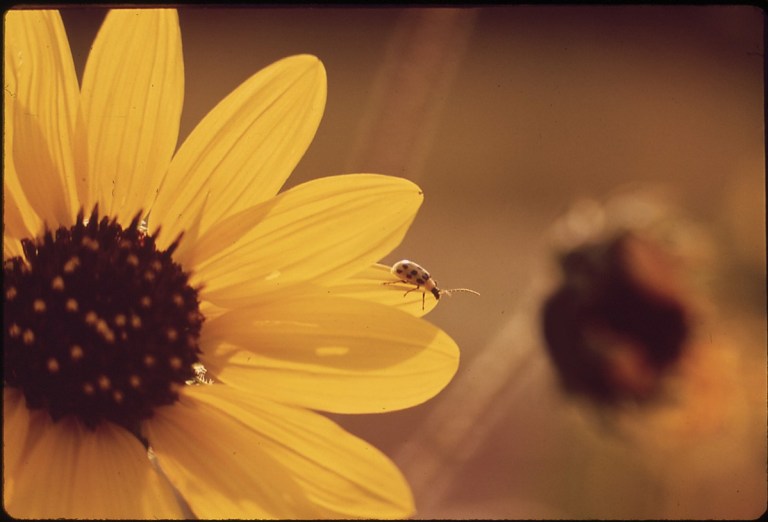
Photograph by Bill Reaves from the Environmental Protection Agency’s Documerica project. (U.S. National Archives)
Silent Spring was published on September 27, 1962 and adrenalized a new public awareness of the fragile interconnectedness of this living world. Several months later, CBS host Eric Sevareid captured its impact most succinctly in lauding Carson as “a voice of warning and a fire under the government.” In the book, she struck a mighty match:
When the public protests, confronted with some obvious evidence … it is fed little tranquilizing pills of half truth.
How tragic to observe that in the half-century since, our so-called leaders have devolved from half-truths to “alternative facts” — that is, to whole untruths that fail the ultimate criterion for truth: a correspondence with reality.
Carson, who was posthumously awarded the Presidential Medal of Freedom, never lived to see the sea change of policy and public awareness that her book precipitated. Today, as a new crop of political and corporate interests threatens her hard-won legacy of environmental consciousness, I think of that piercing Adrienne Rich line channeling the great 16th-century Danish astronomer Tycho Brahe, another scientist who fundamentally revolutionized our understanding of the universe and our place in it: “Let me not seem to have lived in vain.”
Let’s not let Rachel Carson seem to have lived in vain.
UPDATE: For more on Carson, her epoch-making cultural contribution, and her unusual private life, she is the crowning figure in my book Figuring.
_______________________________________
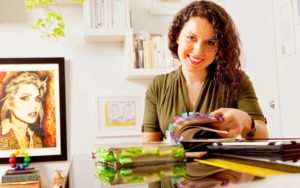 Brain Pickings is the brain child of Maria Popova, an interestingness hunter-gatherer and curious mind at large obsessed with combinatorial creativity who also writes for Wired UK and The Atlantic, among others, and is an MIT Futures of Entertainment Fellow. She has gotten occasional help from a handful of guest contributors. Email: brainpicker@brainpickings.org
Brain Pickings is the brain child of Maria Popova, an interestingness hunter-gatherer and curious mind at large obsessed with combinatorial creativity who also writes for Wired UK and The Atlantic, among others, and is an MIT Futures of Entertainment Fellow. She has gotten occasional help from a handful of guest contributors. Email: brainpicker@brainpickings.org
Go to Original – brainpickings.org
Tags: Environment, Inspirational, Literature, Rachel Carson, Silent Spring
DISCLAIMER: The statements, views and opinions expressed in pieces republished here are solely those of the authors and do not necessarily represent those of TMS. In accordance with title 17 U.S.C. section 107, this material is distributed without profit to those who have expressed a prior interest in receiving the included information for research and educational purposes. TMS has no affiliation whatsoever with the originator of this article nor is TMS endorsed or sponsored by the originator. “GO TO ORIGINAL” links are provided as a convenience to our readers and allow for verification of authenticity. However, as originating pages are often updated by their originating host sites, the versions posted may not match the versions our readers view when clicking the “GO TO ORIGINAL” links. This site contains copyrighted material the use of which has not always been specifically authorized by the copyright owner. We are making such material available in our efforts to advance understanding of environmental, political, human rights, economic, democracy, scientific, and social justice issues, etc. We believe this constitutes a ‘fair use’ of any such copyrighted material as provided for in section 107 of the US Copyright Law. In accordance with Title 17 U.S.C. Section 107, the material on this site is distributed without profit to those who have expressed a prior interest in receiving the included information for research and educational purposes. For more information go to: http://www.law.cornell.edu/uscode/17/107.shtml. If you wish to use copyrighted material from this site for purposes of your own that go beyond ‘fair use’, you must obtain permission from the copyright owner.
